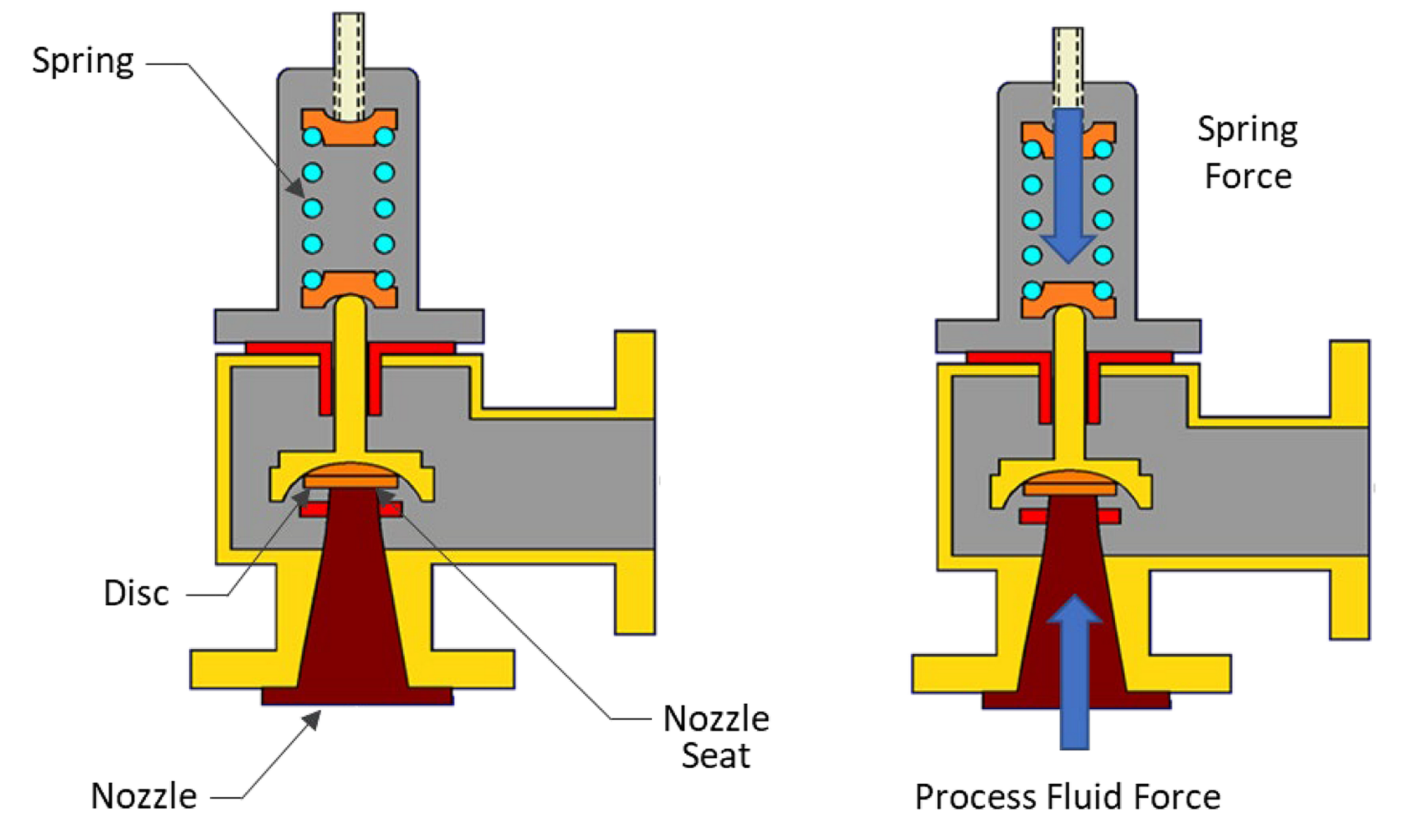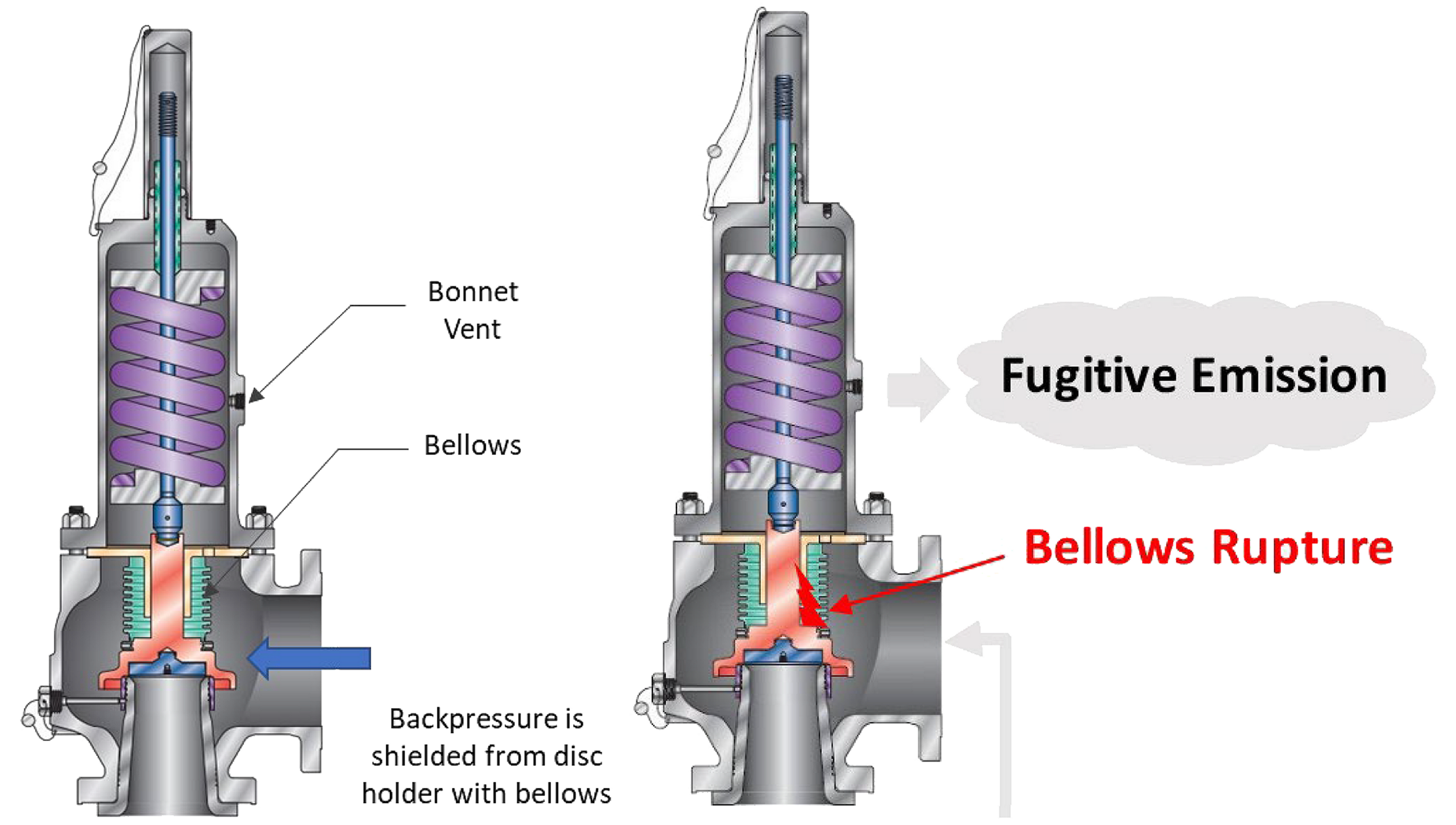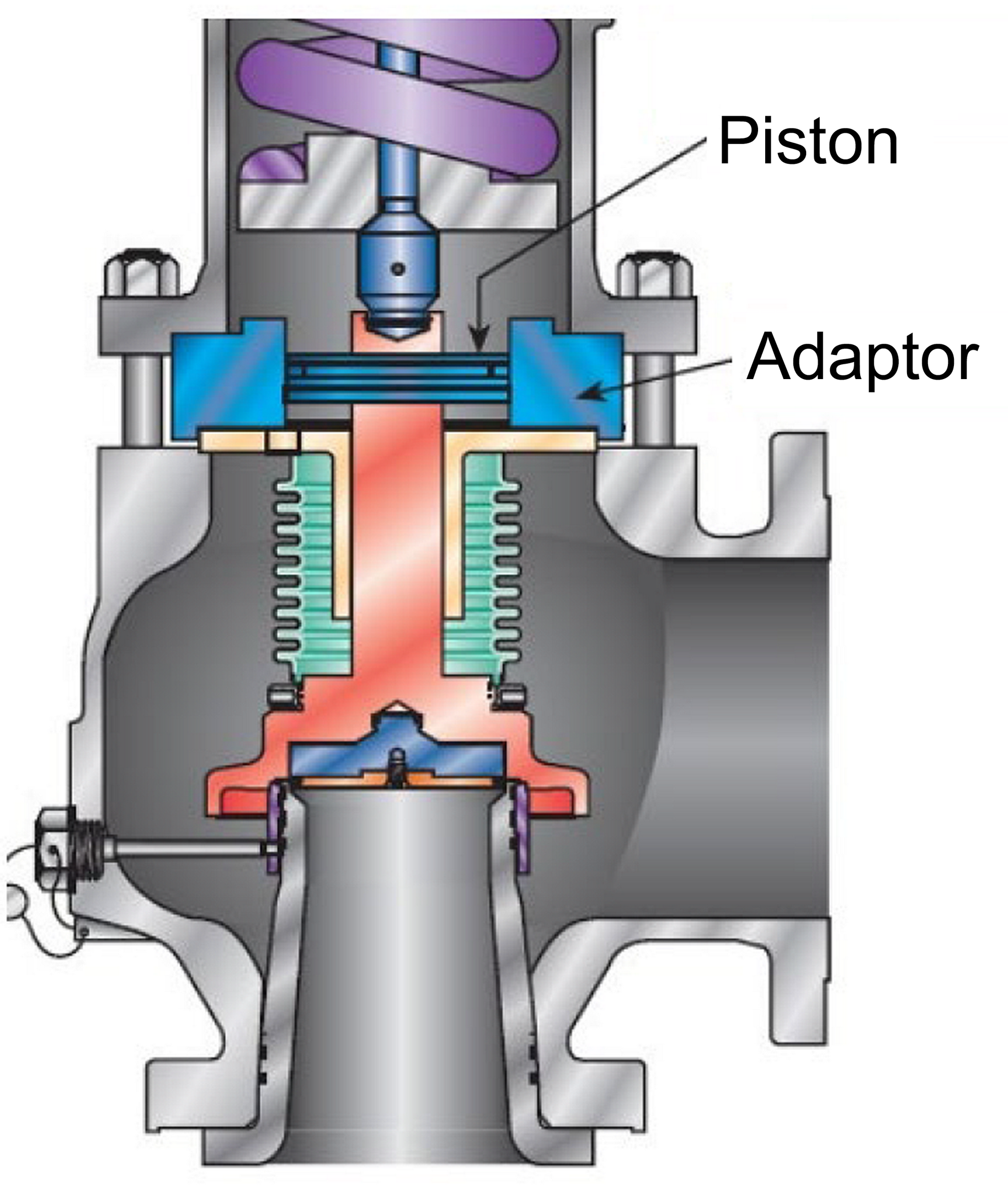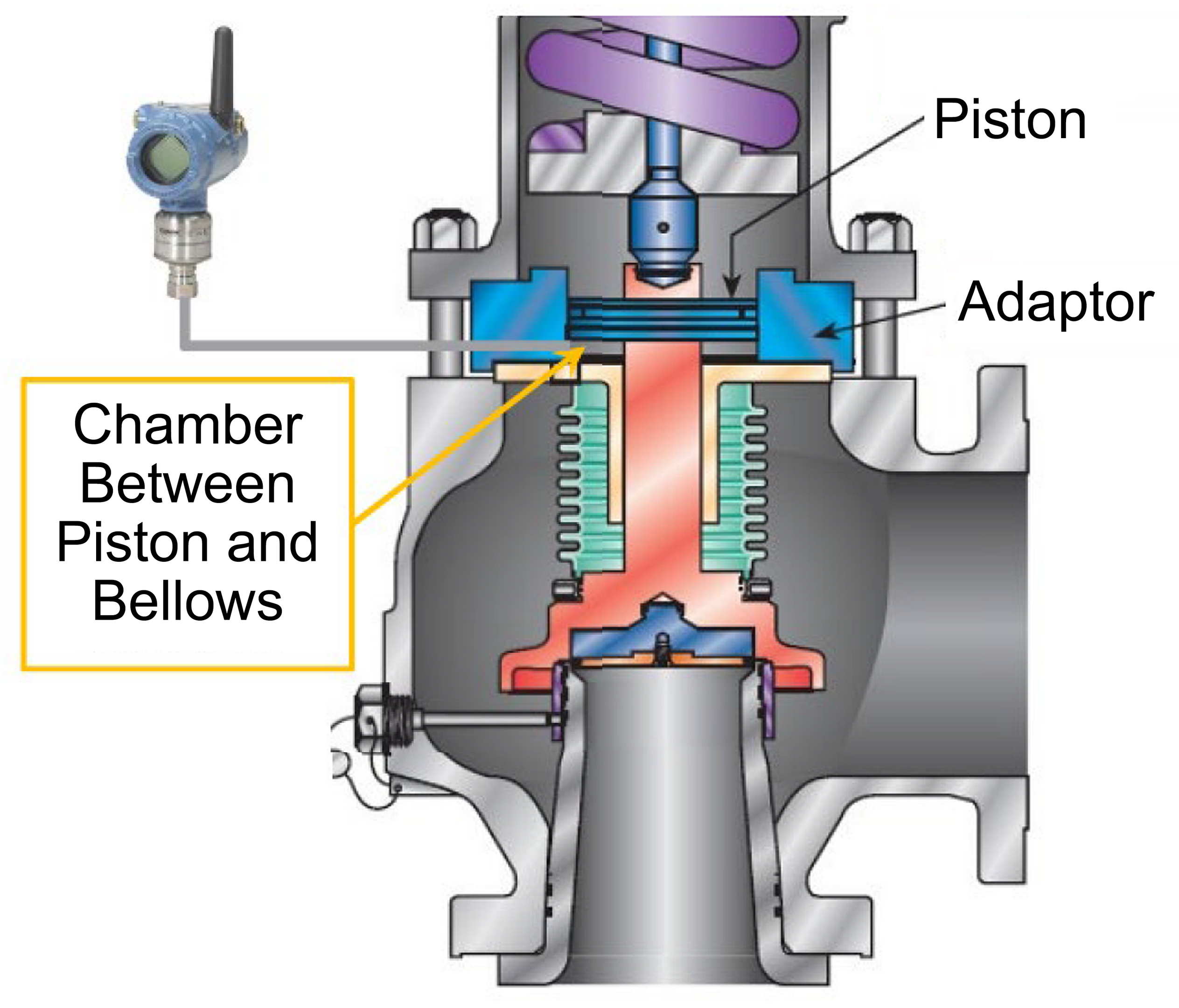Pressure relief valves (PRVs) provide critical overpressure protection in many industries by venting excess process media when necessary. PRVs often include bellows in applications with relief valve headers subject to backpressure, but bellows may be damaged by cycling or corrosive chemical applications, causing significant performance impacts and environmental leakage that may go unnoticed for years.
My article in the December 2023 edition of Hydrocarbon Engineering, titled “Instantaneous Bellows Leak Detection,” discusses an innovative PRV design that reduces the ill effects of bellows damage, as well as technology that immediately detects leaks.
Bellows protect against backpressure
A PRV uses a calibrated spring to hold a disc against the valve inlet nozzle until the process media pressure becomes great enough to lift the disc, venting excess media. Any backpressure in a conventional PRV will exert additional force on the disc holder, effectively raising the PRV’s setpoint.

A pressure relief valve protects equipment by automatically venting the process media when pressure in the inlet nozzle overcomes the downward force of the spring (set pressure)
To address this, many PRVs include a bellows installed above the disc, shielding it from backpressure. Unfortunately, metal bellows are prone to cracking and rupturing, preventing their function and allowing media to leak through the bonnet vent to atmosphere. A study of 30,000 bellows PRVs found a damage rate between 2-6%, subjecting process equipment to overpressure and generating unknown quantities of fugitive emissions.

A bellows-style PRV incorporates a metal bellows above the seat that allows the PRV to operate at setpoint, even with varying backpressures. Should the bellows leak or fail due to a rupture, the PRV set pressure could be affected, and vent header media may escape to the environment.
Balanced pistons improve bellows PRVs
To mitigate these problems, a new PRV design adds a pressure-balancing piston above the bellows. Because this piston is matched with the size of the disc holder, backpressure applies upward on the piston and downward on the disc holder equally, even if the bellows fails.

Installation of a piston above the bellows allows the PRV to still operate at setpoint, even with damage to the bellows.
The piston and surrounding adapter are machined to tight tolerances to significantly reduce leakage through the bonnet vent in the event of bellows damage. While balanced pistons allow damaged bellows PRVs to operate at setpoint with reduced leakage, the damage is still likely to go undetected.
Leak detection provides immediate awareness
A new bellows leak detection technology adds a wired or wireless pressure instrument to the valve that measures the pressure below the piston. Upon damage to the bellows, the pressure below the piston increases and is immediately detected by the transmitter.

The addition of a wired or wireless pressure transmitter (top left) to a PRV provides instant detection of bellows damage and provides the data required for continuous calculation of the fugitive emission leak rate.
The pressure measurement, when correlated with other process information, facilitates root cause analysis, and it also provides insight into the rate of fugitive emissions, empowering plant personnel to prioritize repair accordingly.
Case studies
A chemical plant encountered frequent process instabilities and PRV cycling, damaging bellows and allowing flammable process media to escape. Installing a PRV with leak detection technology provides the plant with notice when damage occurs, and it empowers staff to monitor emissions until repair.
In another application, a balanced bellows PRV installed in a refinery experienced frequent cycling, leading to bellows failure and undetected gas emissions. Leak detection informs personnel as soon as damage occurs, and it enables them to determine whether the system must be repaired immediately.
For operators facing PRV problems, balanced piston PRVs with leak detection ensure continued operation at setpoint even with bellows damage, reduce fugitive emissions, and reveal leaks instantly.
To learn more about the Balanced Diaphragm and Bellows Leak Detection solutions, please visit: Reinventing Pressure Relief Valves on Emerson.com



